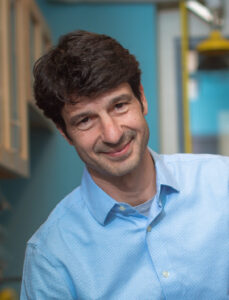- March 13, 2023
- Posted by: margaret dieter
- Category:
Lecturer 2024:
Professor Ruben Juanes
Civil and Environmental Engineering, Massachusetts Institute of Technology
Cambridge, Massachusetts, USA
Bio
Prof. Juanes is a Professor at the Massachusetts Institute of Technology, both in the Department of Civil and Environmental Engineering and in the Department of Earth, Atmospheric and Planetary Sciences. He has an outstanding track record of achievements and contributions to the field of porous media research, by his commitment to excellence in education and mentoring and by his exceptional skills as lecturer and communicator.
Ruben Juanes is a world-renowned expert in the field of multiphase flow in porous media. His research aims at advancing fundamental understanding and predictive capabilities of the simultaneous flow of two or more fluids through rocks, soils, and other porous materials. It combines theory, simulation, and experiments, to elucidate fundamental aspects of multiphase flow.
His contributions provide fundamental understanding of natural phenomena and have the potential to radically advance the deployment of energy systems, which depend critically on multiphase flow processes.
Lecture Options:
Hosts may select one of two options detailed below:
Lecture Option A:
Fluids, Fingers, Fractures and Fractals: Patterns in Porous Media
The displacement of one fluid by another in a porous medium gives rise to a rich variety of hydrodynamic instabilities. Beyond their scientific value as fascinating models of pattern formation, unstable porous-media flows are essential to understanding many natural and man-made processes, including water infiltration in the vadose zone, carbon dioxide injection and storage in deep saline aquifers, methane venting from organic-rich sediments, and fracturing from fluid injection. Here, I review a handful of these hydromechanical instabilities, elucidate the key physics at play, and point to modeling frameworks at either the pore scale or the continuum (Darcy) scale that permit quantitative assessments of their impact at the geologic scale.
Lecture Option B:
Man-made Earthquakes and the Energy Transition
Earthquakes occur when faults slip. While the most devastating earthquakes are of tectonic origin, human activities have been associated with the triggering of earthquakes that have caused substantial economic damage and societal concern. The demonstration that fluid injection can cause earthquakes dates back to the 1970s, but critical gaps remain in our ability to understand and, more importantly, mitigate, the occurrence of induced earthquakes. Here I will discuss some of our recent work employing contrasting approaches to help fill these gaps: from minimal-ingredients spring-slider models that account for poroelasticity to sophisticated multiphysics computational models that integrate disparate datasets and have succeeded at setting management strategies that prevent earthquakes while allowing subsurface operations in a tectonically active field. I will discuss how the lessons learned from these analyses may inform subsurface climate-change mitigation technologies like geological carbon sequestration and hydrogen geostorage.
How to request and host the InterPore Kimberly-Clark Distinguished Lectures
InterPore Foundation accepts applications from member and non-member organizations for hosting the InterPore Kimberly-Clark Distinguished Lecturer. To request the presentation, please download and fill out the application form and return it to Sandra Bartsch with nomination@interpore.org in CC. Lecturer availability will be limited and not all requests can be honored by the lecturer.
Should a physical presentation not be feasible because of travel restrictions due to the COVID-19 pandemic, lecturers will be available to give an online presentation.

